Dene Kedǝ to Dene Ts'ı̨lı̨ (1st ed) Appendix E: Timeline of Dene Kedǝ and Dene Ts’ı̨lı̨ Events
This document is one of six appendices from the first iteration of the report From Dene Kedǝ to Dene Ts’ı̨lı̨: Rethinking Resurgence in the Sahtú Region. In it, the team provides a timeline of selected events and projects throughout Sahtú history, contextualized by events in the Northwest Territories and in Canada.
About the project:
From Dene Kedǝ to Dene Ts’ı̨lı̨ is a collaborative project that explores lessons learned through the past fifty years of Dene and Métis language and way of life initiatives. Bringing together knowledge and experience from longtime activists and educators and youth, as well as review of over 275 documents, the aim is to create a resource for decision-makers and researchers as a basis for resurgence in the Sahtú Region. All phases of this project involve a dialogue between today’s initiatives and yesterday’s legacy.
The picture that has emerged is complex, involving at least seven domains of resurgence: speakers and learners; local knowledge; documentation; education; media; law and policy; and ways of life. During this project we saw the emergence of exciting projects like the Dene Ts’ı̨lı̨ School, a cross-cultural on the land learning opportunity for youth. This school became an integral part of the research and learning process.
Read more about From Dene Kedǝ to Dene Ts’ı̨lı̨. Download the appendix using the PDF link at the bottom of this page.
Cite this resource:
"Appendix E - Timeline of Dene Kedǝ and Dene Ts’ı̨lı̨ Events" in Faun Rice, Keren Rice, Deborah Simmons, Walter Bezha, Jordan Lennie, Shelby Lennie, Michael Neyelle. From Dene Kedǝ to Dene Ts’ı̨ lı̨: Rethinking Resurgence in the Sahtú Region, Northwest Territories©Ɂehdzo Got’ı̨ nę Gots’é ̨ Nákedı (Sahtú Renewable Resources Board), Tulı́ t'a, Northwest Territories, www.srrb.nt.ca. October 2017 Edition.
Dene Kedǝ to Dene Ts'ı̨lı̨ (1st ed) Appendix B: Co-Author Reflections
This document is one of six appendices from the first iteration of the report From Dene Kedǝ to Dene Ts’ı̨lı̨: Rethinking Resurgence in the Sahtú Region. In it, Sahtú Dene and Métis co-authors reflect on their lived experiences and share stories that provide important human context for the history outlined in the report.
About the project:
From Dene Kedǝ to Dene Ts’ı̨lı̨ is a collaborative project that explores lessons learned through the past fifty years of Dene and Métis language and way of life initiatives. Bringing together knowledge and experience from longtime activists and educators and youth, as well as review of over 275 documents, the aim is to create a resource for decision-makers and researchers as a basis for resurgence in the Sahtú Region. All phases of this project involve a dialogue between today’s initiatives and yesterday’s legacy.
The picture that has emerged is complex, involving at least seven domains of resurgence: speakers and learners; local knowledge; documentation; education; media; law and policy; and ways of life. During this project we saw the emergence of exciting projects like the Dene Ts’ı̨lı̨ School, a cross-cultural on the land learning opportunity for youth. This school became an integral part of the research and learning process.
Read more about From Dene Kedǝ to Dene Ts’ı̨lı̨. Download the appendix using the PDF link at the bottom of this page.
Cite this resource:
"Appendix B - Co-Author Reflections" in Faun Rice, Keren Rice, Deborah Simmons, Walter Bezha, Jordan Lennie, Shelby Lennie, Michael Neyelle. From Dene Kedǝ to Dene Ts’ı̨ lı̨: Rethinking Resurgence in the Sahtú Region, Northwest Territories ©Ɂehdzo Got’ı̨ nę Gots’é ̨ Nákedı (Sahtú Renewable Resources Board), Tulı́ t'a, Northwest Territories, www.srrb.nt.ca. October 2017 Edition.
Recognizing Traditional Environmental Knowledge
This paper goes over an interview with Matha Johnson, then Research Director of the Dene Cultural Institute (DCI). The conversation touches upon TEK in schools, challenges and opportunities faced by the DCI in its early years, and the future of TEK in resource management.
From Introduction:
"Western science’s failure to recognize traditional environmental knowledge (TEK) was first made obvious to Martha Johnson more than ten years ago when she was working as a high school teacher in Povungnituk, an Inuit community in northern Quebec. She remembered realizing that “as a non-Aboriginal trying to teach science from a Western perspective, it wasn’t working. So I asked myself, “How do the Inuit perceive the environment?” Johnson began experimenting in learning techniques to find ways of tapping the knowledge passed down among the Inuit. In one exercise, she gave students a diagram of the Arctic food chain and asked them to make the links. One practically illiterate boy made the connections without any problems. Later, Johnson pursued a Master’s degree in Environmental Studies and Anthropology at the University of Toronto. Her major paper examined Inuit folk ornithology, comparing Inuit classification of birds to Western groupings. Johnson’s grassroots experience with Aboriginal communities and her formal studies helped her recognize the holistic nature of TEK. “It combines biology, linguistics, social sciences, and other disciplines and connects them in an interdisciplinary way to examine how people perceive their world, live within it and use its resources” she comments. Johnson spoke about traditional environmental knowledge, the reasons behind its growing recognition, and current research in this field during an interview in Ottawa early this year. She is now Research Director of the Dene Cultural Institute in Canada’s Northwest Territories. The Institute works with Dene communities to preserve and promote this Canadian aboriginal group’s culture, through research and education. Much of the Institute’s work has focused on TEK through research and the publication of a book entitled Lore: Capturing Traditional Environmental Knowledge, edited by Johnson. The book was based on papers produced from a 1990 workshop on TEK, organized by the Dene Cultural Institute. IDRC funded the workshop as a cultural exchange between researchers in developing countries and those working in Canadian aboriginal communities. Community-based projects on TEK in the Amazon Rainforest, the African Sahel, the South Pacific and Southeast Asia were represented at the workshop. The Institute also invited aboriginal community members and researchers from northern Canada’s Belcher Islands. Workshop participants discussed the problems of gathering TEK and integrating it with Western Science to improve natural resource management. They also experienced Dene culture through food, music and dance. The participants’ papers, outlining their project’s research methodology, were incorporated in Lore."
Access this Resource:
The full text of this paper is available from the Community Development Library.
Carter, Deborah. “Recognizing Traditional Environmental Knowledge.” Ottawa: International Development Research Centre Reports 21, no. 1 (1993).
The Mackenzie Valley Pipeline Inquiry
In a retrospective piece, Justice Berger looks back at his reasons for recommending a 10-year postponement of the Mackenzie Valley Pipeline, along with his recommendations to create several wildlife sanctuaries in the Yukon and Northwest Territories. Contextualized by the time of writing, he comments that neither capitalist nor communist economic systems were equipped or prepared to recognize that sustainable growth and industrialization were not actually sustainable. He makes a case for recognizing finite natural resources and spaces, and considering ecology and diversity as a part of any planning process.
Berger's impact on northern resource development and the legal legacy of the Mackenzie Valley Pipeline Inquiry has been remembered by many. Read about Berger's current activities in the CBC article: "B.C. makes symbolic choice in retaining Thomas Berger as counsel in Trans Mountain challenge."
Watch The Inquiry Film, hosted by the Prince of Wales Northern Heritage Centre.
Access this Resource:
Berger, Thomas R. “The Mackenzie Valley Pipeline Inquiry.” Osgood Hall Law Journal 16 (1978): 639-647.
Indigenous Linguistics and Land Claims: The Semiotic Projection of Athabaskan Directionals in Elijah Smith's Radio Work.
The authors discuss a 1985 Southern Tutchone radio broadcast wherein co-performers used deitic spatial terms, placing a listener in relationship to the landscape being discussed, and “spatially evoking the history of the entire region.” (282). The authors contend that the linguistic features of radio performances such as these are linked to social uses and perceptions of place, including land claims and Indigenous rights to land.
Access this Resource:
Moore, Patrick and Daniel Tlen. “Indigenous Linguistics and Land Claims: The Semiotic Projection of Athabaskan Directionals in Elijah Smith's Radio Work.” Journal of Linguistic Anthropology 17, no. 2 (December 2007): 266-286.
Creative convergence: exploring biocultural diversity through art
From Abstract: "Using multiple knowledge sources to interpret patterns of biodiversity can generate the comprehensive species characterizations that are required for effective conservation strategies. Caribou (Rangifer tarandus) display substantial intraspecific variation across their distribution and in the Sahtú Region of the Northwest Territories, Canada, three caribou types, each with a different conservation status, co-occur. Caribou are essential to the economies, culture, and livelihoods of northern indigenous peoples. Indigenous communities across the north are insisting that caribou research be community-driven and collaborative. In response to questions that arose through dialogue with five Sahtú Dene and Métis communities, we jointly developed a research approach to understand caribou differentiation and population structure. Our goal was to examine caribou variation through analysis of population genetics and an exploration of the relationships Dene and Métis people establish with animals within bioculturally diverse systems. To cultivate a research environment that supported łeghágots'enetę “learning together” we collaborated with Ɂehdzo Got'ı̨nę (Renewable Resources Councils), elders, and an advisory group. Dene knowledge and categorization systems include a comprehensive understanding of the origin, behaviors, dynamic interactions, and spatial structure of caribou. Dene people classify tǫdzı “boreal woodland caribou” based on unique behaviors, habitat preferences, and morphology that differ from ɂekwę́ “barren-ground” or shúhta ɂepę́ “mountain” caribou. Similarly, genetic analysis of material (microsatellites and mitochondrial DNA) from caribou fecal pellets, collected in collaboration with community members during the winter, provided additional evidence for population differentiation that corresponded to the caribou types recognized by Dene people and produced insights into the evolutionary histories that contribute to the various forms. We developed culturally respectful and relevant descriptions of caribou variation through partnerships that respect the lives and experiences of people that depend on the land. By prioritizing mutual learning, researchers can broaden their understanding of biodiversity and establish a common language for collaboration."
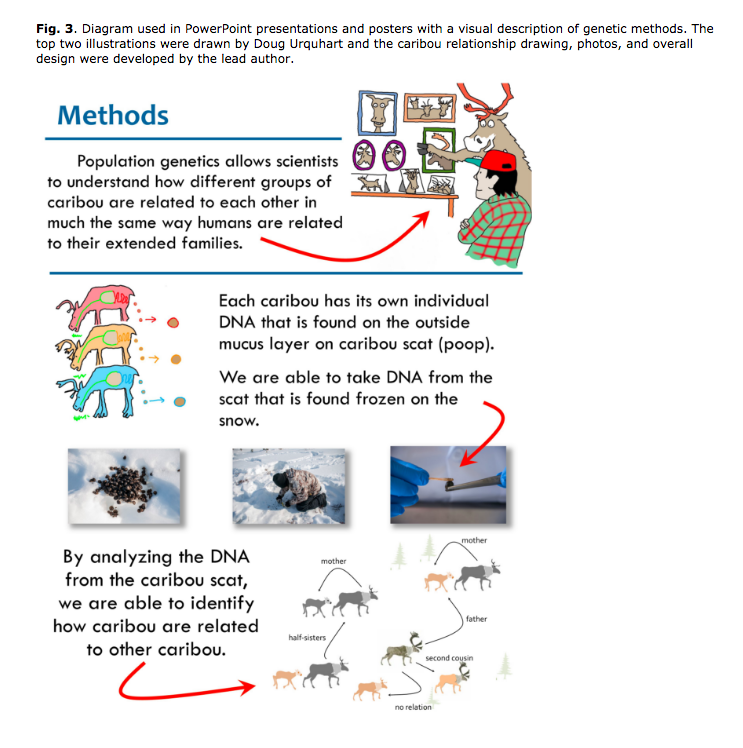
Image from article.
Access this Resource:
The full text of this article is available at: https://www.ecologyandsociety.org/vol22/iss2/art4/
Polfus, Jean, Deborah Simmons, Michael Neyelle, Walter Bayha, Frederick Andrew, Leon Andrew, Bethann Merkle, Keren Rice, and Micheline Manseau. “Creative convergence: exploring biocultural diversity through art.” Ecology and Society 22, no. 2 (2017).
Land-based Practice for Indigenous Health and Wellness in Yukon, Nunavut, and the Northwest Territories
Redvers’ thesis focuses on the growing frequency of land-based practice (e.g. on the land youth programs) in Aboriginal settings, its potential for revitalization, wellbeing, and youth resilience, and the value of land-based practice for other activities such as research. She begins to address a gap in the literature regarding the development, implementation, and evaluation of land based practices.
Redvers’ work describes the health benefits and other positive outcomes that being on the land (and spending more time there) can have for all generations of people. As her work is framed, in part, as a response to high suicide rates in northern Canada, she has a particular emphasis on youth resilience. Redvers works with a land-based understanding that sees the land itself as healing. This has been traditionally known for a long time and only recently has been complemented by biomedical research. Not only does being on the land improve cultural, social, physical, and psychological wellbeing, it also promotes land stewardship, intergenerational transmission of knowledge, enhanced learning, capacity building, language transfer, and good training for non-Indigenous researchers.
From Abstract: "This thesis examines the cultural concept and role of the Land as healer in Indigenous communities in the Northwest Territories, Yukon, and Nunavut, and the importance of facilitating modern Land-based programs and activities for integrated health, education, and environmental outcomes. It describes a yet largely undefined field of professional practice currently being negotiated on the ground in communities. This valid form of integrative practice, centered in Indigenous pedagogy and wisdom, recognizes that people are intimately interwoven and connected with their traditional lands, and that directly cultivating this fundamental relationship can shape and influence all areas of interaction with society, including our health and wellness. Research methods were framed by an Indigenous methodology of narrative experience. Eleven Land-based practitioners were interviewed, and their narratives speak to the recognition of Land practice as an important part of individual and community resilience in the face of rapid colonial change and its subsequent challenges."
Access this Resource:
This PDF is fully accessible at: https://static1.squarespace.com/static/5626b5ebe4b0fcee4754da16/t/5a85e5f0f9619af725504557/1518724596509/Jennifer_redvers_Thesis_2016.pdf
For an alternative source, in case of a broken link, see: http://hdl.handle.net/11023/2996
Redvers, Jennifer. Land-based Practice for Indigenous Health and Wellness in Yukon, Nunavut, and the Northwest Territories. Master’s Thesis, University of Calgary, 2016.
Sahtú Environmental Research and Monitoring Forum Activity Report 2015-2016
From Report: The Sahtú Environmental Research and Monitoring Forum was initiated in 2013 to support environmental research and monitoring by providing a venue for discussing plans and accommodating the priorities and traditional knowledge of Sahtú communities. Through fostering communications between forum members, which include community, regional, territorial and federal government representatives as well as industry representation, forum members hope to ensure that “environmental monitoring and research programs and projects in the Sahtú are coordinated and conducted in ways that reflect regional and community priorities, engage communities, value both western science and traditional knowledge, and support wise decision-making.” Achievements from this reporting period included environmental research and monitoring workshops, research results workshops, and publications.
Access this Resource:
See the PDF attachment at the bottom of the page
Wenman, Christine. Sahtú Environmental Research and Monitoring Forum 2013-2015 Update Report. Tulıt’a: PlanIt North, 2015.
Belare Wı́le Gots'ę́ Ɂekwę́ - Caribou for All Time: A Délı̨nę Got’ı̨nę Plan of Action
This is a traditional Caribou management plan, approved by Délı̨nę First Nation, Land Corporation and Ɂehdzo Got'ı̨nę. It is the first plan of its kind in Canada. After a formal public hearing, the plan was also approved by the SRRB and subsequently by the GNWT Minister of Environment and Natural Resources.
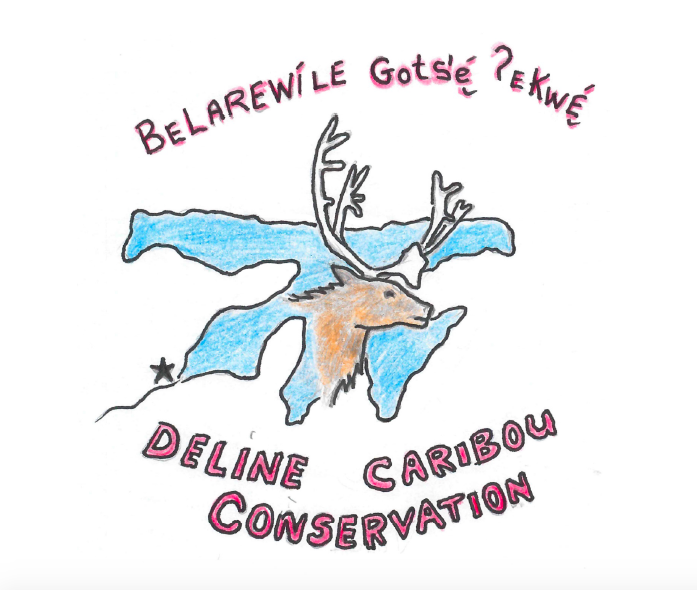
Access this Resource:
This resources is available elsewhere on the SRRB Website. Or, download the PDF from the attachment at the bottom of this page.
Délı̨nę Ɂekwę́ Working Group. Belare Wı́le Gots’ę́ Ɂekwę́ – Caribou for All Time. Délı̨nę : Délı̨nę Ɂekwę́ Working Group, 2016.
Łeghágots' enetę (learning together): the importance of indigenous perspectives in the identification of biological variation
From Abstract: Indigenous communities across the north are insisting that caribou research be community-driven and collaborative. In response to questions that arose through dialogue with five Sahtú Dene and Métis communities, we jointly developed a research approach to understand caribou differentiation and population structure.
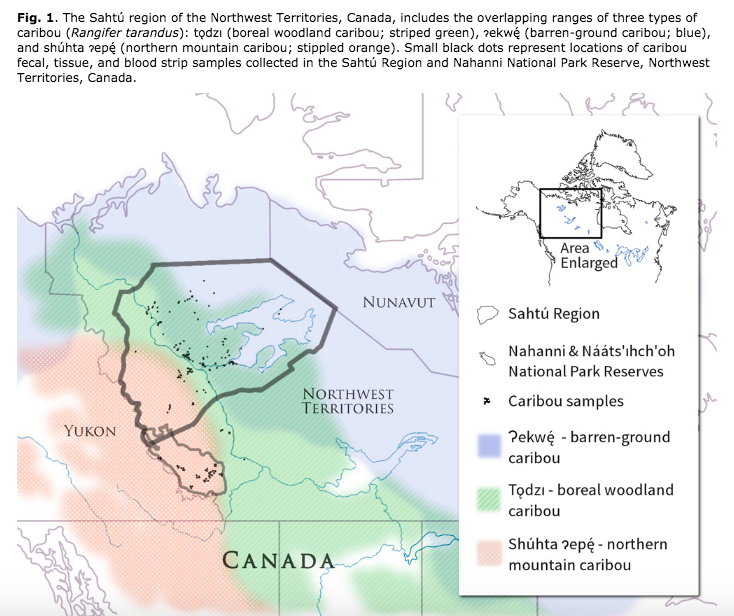
Image from article.
Read more about this research.
Access this Resource:
The full text of this paper is available on the Ecology and Society website: https://www.ecologyandsociety.org/vol21/iss2/art18/
The SRRB hosts a PDF (downloadable at the bottom of this page), available through a Creative Commons 4.0 Non-Commercial Attribution, https://creativecommons.org/licenses/by-nc/4.0/legalcode
Polfus, Jean, Micheline Manseau, Deborah Simmons, Michael Neyelle, Walter Bayha, Frederick Andrew, Leon Andrew, Comelya Klütsch, Keren Rice, and Paul Wilson. “Łeghágots' enetę (learning together): the importance of indigenous perspectives in the identification of biological variation.” Ecology and Society 21, no. 2 (2016): 18.


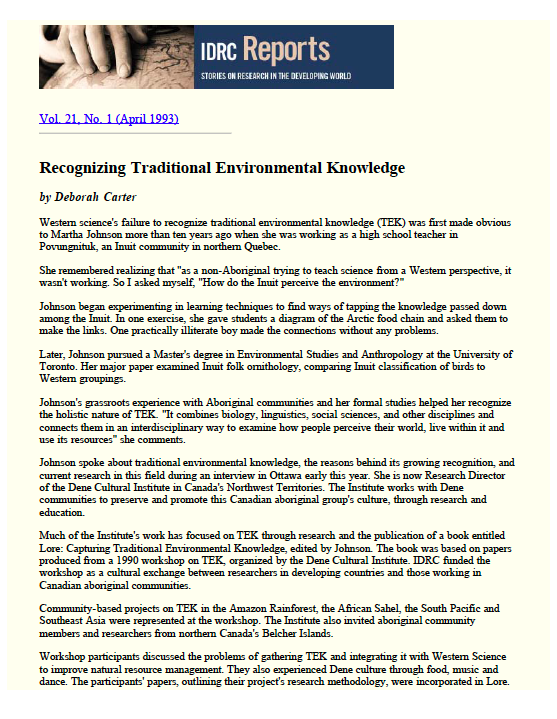
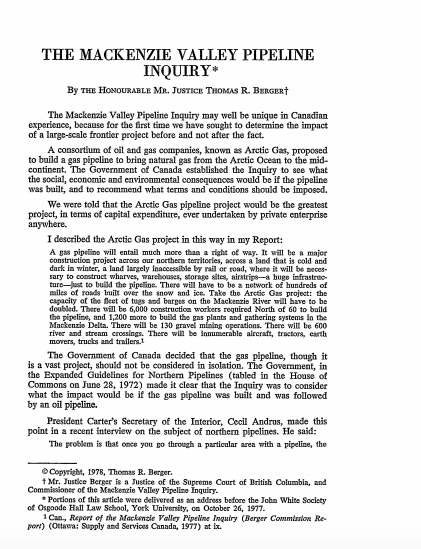
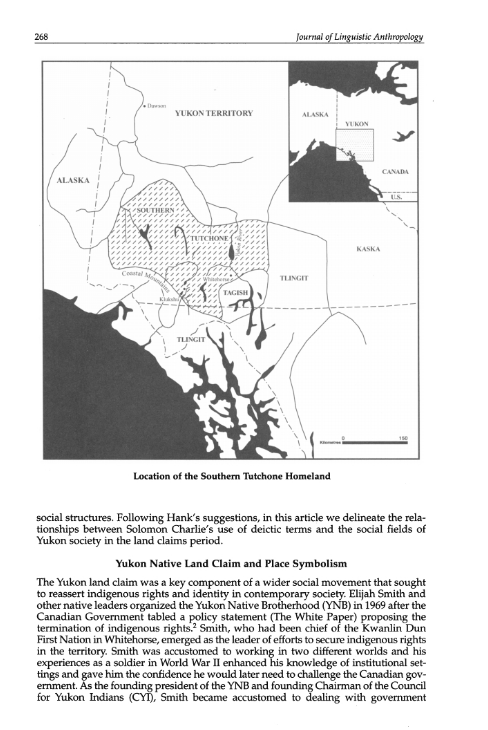
 Phone: 867-374-4040
Phone: 867-374-4040 Email:
Email: